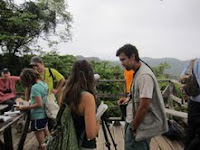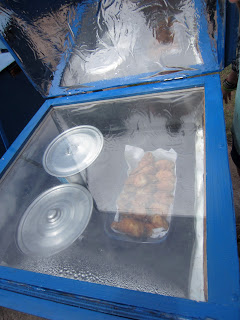Boat ride to Yorkin, Costa Rica, site of an ecolodge
run by indigenous Bribri people and of chocolate making
Chocolate
Me: Let me tell you about the wonderful and mysterious
process of making chocolate. This amazing plant starts out in an unexpected
form, which few fellow chocoholics even know. A pod. Unlike money, it really
does grow on trees!
Pablo: But wait, didn’t the ancient Mayans actually use
Cacao seeds as money?
Me: Uh… yea, but that’s a whole other story. Anyways,
chocolate, or cacao, is a pod which grows on a tree. In each pod are rows of
seeds covered in a slimy membrane.
Pablo: Ewww!
Me: No, it is really tasty actually, but the seeds are what
are sought after. People harvest the seeds, and go through
a process of fermenting and drying in the sun giving a deep flavor which is
emphasized by a final roasting.
Pablo: And then it’s chocolate?
Me: No. Then you have to remove the husk of each seed, which
resembles a peanut skin.
Pablo: Sounds boring.
Me: Yes but here they use an old technique of laying the dry
seeds in a wooden platter and use a huge round rock to grind them up.
Neal grinding the cacao beans
Pablo: A rock?
Me: Yup.
Pablo: You’re kidding.
Me: Nope. That removes the husk and then they toss them up
in a swift motion allowing the lighter husks to blow away, leaving behind
crushed cacao nibs.
Pablo: Sounds magical alright.
Me: Then they use a hand-crank mill to grind the nibs even
further into a dark creamy paste.
Pablo: Chocolate!
Me: Well… Sort of, 100% chocolate! Then you mix in other
tasty things like sugar and banana. I like it with cayenne, coffee beans,
ginger, or shredded coconut, but there are lots of things that go really well.
Pablo: Wow. So…. Where can I get some?
Willow Beier






